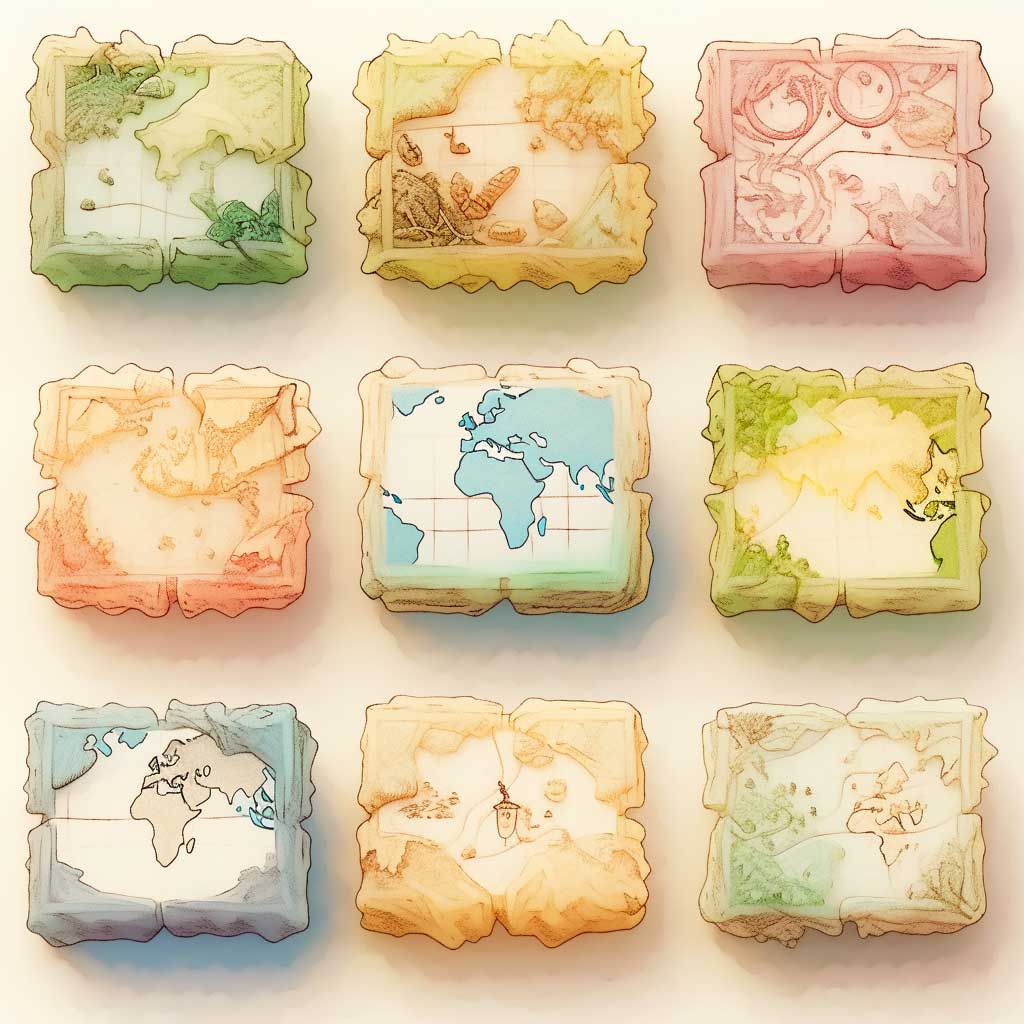- Introduction
- Types of soap from around the world
- African black soap
- Castile soap
- Savon de Marseille soap
- Goat Milk soap
- Charcoal soap
- Glycerin soap
- Tea tree soap
- Oatmeal soap
- Himalayan Pink Salt soap
- Turmeric soap
- Aleppo soap
- Nabulsi soap
- Olive oil soap
- Tallow soap
- Sandalwood soap
- Red clay soap
- Pine tar soap
- Ideal soap for your skin
- Conclusion
Introduction
Soap, a humble essential that's been our trusty sidekick for millennia. But have you ever paused to ponder its rich tapestry of history? Or wondered about the myriad of soap bars that have evolved from ancient recipes? In this article, we're not just diving into the bubbly world of soap types. Instead, we're taking a special route, focusing on the tales of their origins and evolution. So, buckle up, because we're about to embark on a sudsy adventure to find that perfect bar for your skin!
The Ancient Origins of Soap
Originating as early as 2800 BC, soap's history begins in ancient Babylon. Historical excavations have unearthed clay cylinders from this epoch, with inscriptions describing soap production. Essentially, they documented a rudimentary method of soap-making, detailing how fats were boiled with ashes.
Soap Across the Ages
Different civilizations and societies embraced this art of soap-making across the centuries. The Romans, in their indomitable empirical style, pioneered the process to a new level, even endowing soap its name from the legendary Mount Sapo. This is the birthplace of the soap's journey into our bathrooms and hearts.
Fast forward to the 7th century AD, and soap-making has evolved into a sophisticated art in Italy, Spain, and France. Having easy access to ingredients like olive oil, these countries quickly became the centers of soap craftsmanship. The world had begun to witness the initial glimpses of diversification in soap types.
Modern-Day Soaps: A World War Necessity
What's riveting about soap's history is how it remained relatively constant for centuries, only to be revolutionized during the two World Wars. During these periods, a shortage of animal and vegetable fats forced the invention of synthetic detergents. This introduced the spectrum of soap bars we are familiar with today.
Now that you are familiar with the rich history of soap, it's time to explore the various types of soap bars available today, and most importantly - find out which one's perfect for you! Stay with us as we delve into the fascinating world of soaps.
Exploring the Different Types of Solid Soap Bars
African Black Soap:

Origin: Deeply rooted in West African traditions, especially in regions like Ghana and Nigeria.
Ingredients: Made from the ash of locally harvested plants and barks such as plantain, cocoa pods, palm tree leaves, and shea tree bark.
Characteristics: A dark, rustic hue, often with an earthy scent.
Benefits: Celebrated for its deep cleansing properties, African Black Soap is also known to help reduce acne, hyperpigmentation, and fine lines.
Buy raw African black soap bars.
Castile Soap:
Origin: Hailing from the Castile region of Spain, hence the name.
Ingredients: Traditionally made from olive oil, though modern versions may use other vegetable oils.
Characteristics: A gentle soap, often available in both bar and liquid forms.
Benefits: Known for its versatility, it's gentle enough for all skin types and can be used for everything from bathing to cleaning dishes and floors.
Where to buy:
Savon de Marseille Soap:

Origin: A timeless classic from the Provence region of France.
Ingredients: Traditionally made with a mix of sea water from the Mediterranean Sea, olive oil, and alkaline ash from sea plants.
Characteristics: A hard, often green or beige bar with a minimalistic scent.
Benefits: Renowned for its moisturizing properties, it's gentle on all skin types and is often recommended for individuals with skin conditions.
Where to buy:
Goat Milk Soap:

Origin: While the exact origins are hard to pin down, goat milk has been used in skincare across various cultures for centuries.
Ingredients: Primarily made from goat milk, often combined with essential oils, herbs, and natural colorants.
Characteristics: Creamy texture with a mild, often milky scent.
Benefits: Packed with essential nutrients and vitamins like vitamin D, C, B1, B6, B12, and E, it's known for its moisturizing properties and is great for people with dry or sensitive skin.
Charcoal Soap:

Origin: The use of charcoal in skincare can be traced back to ancient Egypt.
Ingredients: Activated charcoal is the primary ingredient, often combined with essential oils and a soap base.
Characteristics: Distinctive black or gray color, with a smooth texture.
Benefits: Known for its ability to draw out toxins, dirt, and oils from the skin, making it a favorite for deep cleansing and detoxifying.
Glycerin Soap:

Origin: Glycerin soaps have been around since the late 1800s when glycerin, a byproduct of soap making, was discovered.
Ingredients: Primarily made from glycerin, often combined with natural fragrances and dyes.
Characteristics: Transparent or translucent appearance with a smooth texture.
Benefits: Highly moisturizing, it's a boon for dry skin, offering hydration and a gentle cleanse.
Tea Tree Soap:

Origin: Tea tree oil has been used by indigenous Australians for centuries for its medicinal properties.
Ingredients: Tea tree oil is the star ingredient, often combined with other natural ingredients in soap.
Characteristics: A refreshing scent, often reminiscent of eucalyptus with a green or pale hue.
Benefits: Renowned for its antiseptic properties, it's a go-to for acne-prone skin and offers a deep cleanse without over-drying.
Oatmeal Soap:

Origin: Oatmeal has been used for skincare since ancient Egyptian and Greeks times.
Ingredients: Ground oatmeal is the primary ingredient, often combined with honey or milk.
Characteristics: Grainy texture, offering mild exfoliation.
Benefits: Known for its soothing properties, it's great for dry, itchy skin and offers gentle exfoliation.
Himalayan Pink Salt Soap:

Origin: Inspired by the pure salt deposits of the Himalayan mountains.
Ingredients: Primarily made from ground Himalayan pink salt.
Characteristics: Pinkish hue with a gritty texture.
Benefits: Offers gentle exfoliation, detoxification, and mineral infusion, helping to balance skin's pH levels.
Turmeric Soap:

Origin: Turmeric has been a staple in Indian skincare and Ayurvedic practices for centuries.
Ingredients: Ground turmeric root is the primary ingredient.
Characteristics: Distinctive golden-yellow hue.
Benefits: Known for its anti-inflammatory properties, it can help reduce acne and brighten the skin.
Aleppo Soap:

Origin: Named after the city of Aleppo in Syria.
Ingredients: Made from olive oil and laurel berry oil.
Characteristics: Golden-brown on the outside with a green hue inside.
Benefits: Offers deep moisturization and has antiseptic properties, making it great for various skin conditions.
Nabulsi Soap:
Origin: Originating from Nablus in Palestine.
Ingredients: Made primarily from olive oil, water, and lye.
Characteristics: Hard, pale soap often stamped with intricate designs.
Benefits: Known for its moisturizing properties, it's gentle on the skin and offers a deep cleanse.
Olive Oil Soap:

Origin: Traced back to ancient Mediterranean cultures.
Ingredients: Primarily made from olive oil.
Characteristics: Soft, often greenish hue with a mild scent.
Benefits: Extremely moisturizing, it's perfect for dry skin and known to provide a gentle cleanse.
Tallow Soap:

Origin: One of the oldest forms of soap, used widely in Europe during the Middle Ages.
Ingredients: Made from tallow or rendered animal fat.
Characteristics: Hard and long-lasting.
Benefits: Offers a creamy lather and is known for its moisturizing properties.
Sandalwood Soap:
Origin: Sandalwood has been cherished in India and other parts of Asia for its aromatic heartwood.
Ingredients: Sandalwood oil or powder is the primary ingredient.
Characteristics: Often has a rich, woody scent.
Benefits: Apart from its mesmerizing fragrance, it's known for its antiseptic and anti-inflammatory properties.
Red Clay Soap:

Origin: Red clay has been used for skincare in various cultures, especially in South America.
Ingredients: Made primarily from red clay, often combined with essential oils.
Characteristics: Distinctive reddish hue.
Benefits: Known for its detoxifying properties, it helps in tightening pores and clarifying the skin.
Pine Tar Soap:

Origin: Pine tar has been used for skincare in Nordic countries for centuries.
Ingredients: Made primarily from pine tar.
Characteristics: Dark color with a smoky scent.
Benefits: Offers relief from skin conditions like eczema, psoriasis, and dandruff. It's also known for its antiseptic properties.
Mastering the Art of Soap Selection
- Decoding Your Skin's Language: Before diving into the vast ocean of soaps, pause and assess. Is your skin dry, oily, a mix of both, or sensitive? This introspection will steer your choice in the right direction.
- Ingredient Insight: Dive deep into the ingredient list. Steer clear of soaps laden with synthetic detergents. Instead, gravitate towards those boasting of natural moisturizing agents that hydrate without harming.
- Tailoring to Your Needs: If acne outbreaks often plague you, a tea tree-infused soap might be the answer. For those seeking a thorough cleanse, nothing beats the prowess of activated charcoal. And if you're an eco-warrior at heart, vegan soaps free from palm oil resonate with both your skin and your values.
Conclusion: A World of Soaps Awaits Your Discovery
Venturing into the world of soaps is akin to embarking on a global expedition. From the bustling markets of West Africa to the serene olive groves of the Mediterranean, each soap bar carries with it a tale of tradition, craftsmanship, and cultural pride. But beyond these stories, lies the true essence of soap - its ability to cater to the unique needs of our skin, offering solace, rejuvenation, and sometimes, a touch of luxury.
As we've journeyed through the annals of soap history and explored the myriad of options available today, one thing becomes clear: there's a perfect soap match for everyone. Whether you're seeking a deep detoxifying cleanse, a gentle touch for sensitive skin, or simply yearning for a fragrant escape, the world of soap bars promises a treasure trove of delights. So, next time you stand before a shelf of soaps, remember the rich tapestry of stories, traditions, and care that goes into each bar. And as you lather up, take a moment to appreciate the global traditions that have come together to give you that perfect, bubbly experience. Happy soaping!




